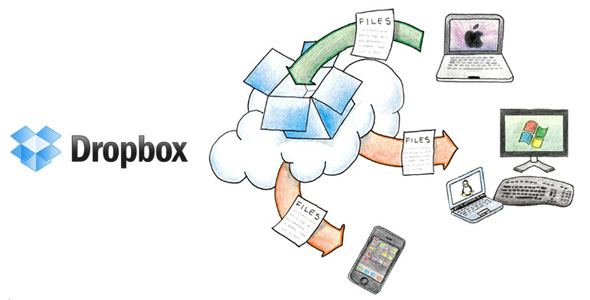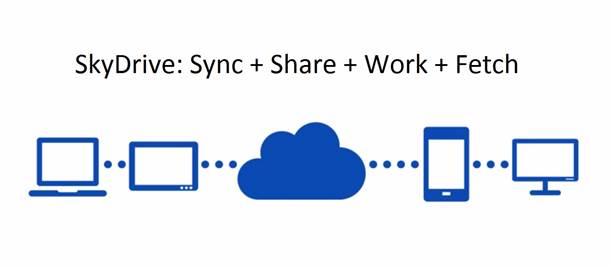The need to back up your data is indisputable, but how you
do it is a matter of choice. Cloud backup services (go.pcworld.com/easysaves)
are the most hassle-free option, but they can be costly, and require a stable, high-speed
broadband connection not available to everyone. And NSA surveillance (go.
pcworld.com/nsacloud) has certainly made it difficult to trust sensitive data
to a third-party provider.
Alternatives exist. With a combination of hardware, apps,
and services, you can create secure, easily accessible data backups without
relying on the cloud.
External drives
Long before cloud backup services sprang up, businesses and
individuals used external USB hard drives. Such a local backup is faster than
uploading it to the cloud - especially via a USB 3.0 connection - and external
drives are a relatively cheap, one-time investment rather than an ongoing
subscription. Still, two potential concerns remain.
One: What happens when the external drive malfunctions or
crashes? Consumer-grade drives are pretty reliable, but they will inevitably
fail (go.pcworld.com/drivefails) - usually about the same time your PC crashes,
if Murphy has anything to say about it. Second, if a fire or flood destroys
your home or office, your external drive will succumb right along with your PC.
You can resolve both issues, however, with a couple of
simple steps. First, perform backups to two external USB hard drives. Then
store one of the drives in a fireproof safe (preferably on a shelf to avoid
water damage from a flood) or off site in a safety deposit box.
For even more security, use a disaster-proof drive like an
ioSafe Solo (iosafe.com) as one of your two backup drives. They've been
designed and tested to survive (go.pcworld.com/drivetested) man's and Mother
Nature's destructive worst.

The ioSafe Solo
protects your data from fire and flood.
Peer-to-peer backup
One of the biggest benefits of using a cloud backup service,
obviously, is that the data is stored safely offsite.
As an alternative to locking away a hard drive in a
fireproof box, you could instead use a peer-to-peer backup system such as the
one offered by CrashPlan (go.pcworld.com/peerbackup).
CrashPlan is a cloud backup provider, but it also offers a
free service that lets you back up data to the PC of a friend or family member,
while they back up their data to yours. Your backup will be stored safely
offsite and encrypted, so it can be accessed only by using your personal
account information.
Consider a few caveats, though. The process takes place over
the Internet, so, depending on your broadband speed, it may take a lot longer
than a local backup. Your friend or family member's PC must also be turned on,
connected to the Internet, and have enough available storage to accommodate your
data.

CrashPlan Free
creates a peer-to-peer network for backing up data offsite.
Private cloud
Another advantage of storing data in the cloud is that you
can access it from virtually anywhere, anytime, via a mobile app or a Web
browser. A network-enabled external drive like the Western Digital (WD) My
Cloud (go.pcworld.com/mycloudrev) provides the same convenience.
My Cloud offers 2 terabytes or more of storage, and WD has
apps for both Android and iOS that let you access the data stored on the drive
from wherever you are. The apps also integrate with cloud services like
Dropbox, SkyDrive, and Google Drive, enabling you to
transfer files from your My Cloud drive to the cloud, or vice versa. WD also
has a four-bay version called My Cloud EX4 (go.pcworld.com/mycloudex4), which
adds the assurance of a RAID array's mirrored copies.

Dropbox
ioSafe offers a networked version of its disaster-proof
drives (go. pcworld.com/iosafenas). It features two drives set up in a RAID
configuration with similar syncing and mobile app access, for use as a private
cloud.
Another option is a service like Younity (go.pcworld.com/younity)
or MiST (go.pcworld. com/mist); they index your data where it is and make it
available from mobile apps and other PCs. In short, the data itself stays in
its original location - on your mobile device, or your Windows or Mac computer.
The source of the data hasto be turned on and connected to the Internet for the
data to be accessible from other platforms or devices, but you can use these services
along with some other backup alternative to enjoy the same anywhere-access to
data that you get from the cloud.

SkyDrive
Backing up your data using a mix of these tools isn't as
turnkey-simple as using an online service. But once you have a process in
place, you can confidently kiss the cloud good-bye.